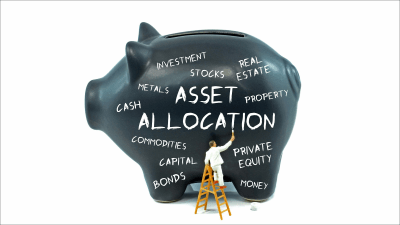Sub-prime’s lengthy hangover
The sub-prime crisis could last for many years as investment banks try and dispose of US$1 trillion of securitised assets, a US fund manager believes.
AQR Capital Management head of global trading strategies Michael Mendelson said the money markets were capable of handling US$1 billion of assets sales, but the current amount of assets will take a long time to dispose of.
“We have been to see chief financial officers of investment banks and we have seen the fear they have regarding these assets,” Mendelson said.
“We did not understand the depth of the problem until we met the banks, and they have got to sell US$1 trillion of assets, which nobody wants.”
He admits people will eventually buy these assets at a discount rate as they focus on the risks.
As a result of these assets being picked up by the banks, the way they are viewed by the banks has changed.
“The banks are no longer selling commercial paper, so they are using it as collateral to get funding for their respective reserve banks,” Mendelson said.
“So we are going to have this bit of financial indigestion for quite a long time, possibly up to 10 years.”
The sub-prime crisis will certainly outlast the quant liquidity crisis in the US in August, he said.
That crisis saw between $300 to 400 million of equities sold off in the space of a week.
“Quant portfolio managers ran into some liquidity problems and were forced to sell off some good quality assets quickly,” Mendelson said.
“The normal market deviation for a year is 5 per cent, but the US market was devalued 35 per cent in a week.”
However, the crisis was short lived as the market bounced back the following week.
The quant crisis came and went, but the sub-prime crisis has got legs, he said.
Head of PIMCO Australia John Wilson said the origins of the sub-prime crisis could be traced back to September 11.
“On September 11 US fiscal policy changed,” he said.
“After that event, President Bush told the American public to go and spend.
“To encourage people to spend the banks kept rates low and there was a lot of liquidity.”
Wilson said the investment banks jumped in and starting offering securitised products with high yields.
“There was always high risk in these products, but people took an unreasonable assumption about volatility with these products,” he said.
“As a result, we saw leveraged products providing leverage on illiquid assets.”
This saw the sub-prime market in the US jump to 20 per cent of all mortgages issued.
Wilson said in Australia we saw Basis Capital offering 20.34 per cent returns for 1.5 per cent volatility.
“This doesn’t happen, so don’t believe it,” he said.
“But what the sub-prime crisis tells us is anything new as an asset is only worth what somebody will pay for it regardless of the models.”
Wilson said there is no return without risk, and that is what people seemed to forget before this crisis.
Recommended for you
The top five licensees are demonstrating a “strong recovery” from losses in the first half of the year, and the gap is narrowing between their respective adviser numbers.
With many advisers preparing to retire or sell up, business advisory firm Business Health believes advisers need to take a proactive approach to informing their clients of succession plans.
Retirement commentators have flagged that almost a third of Australians over 50 are unprepared for the longevity of retirement and are falling behind APAC peers in their preparations and advice engagement.
As private markets continue to garner investor interest, Netwealth’s series of private market reports have revealed how much advisers and wealth managers are allocating, as well as a growing attraction to evergreen funds.











